[Egyptian Studies] The specific role of baboons in the life of ancient Egypt
The ancient Egyptians were known for their veneration of various animals, and one of the most respected is, for it is not strange, a monkey.
In ancient Egyptian mythology, this type of monkey is common in ancient Egypt, attributed to Thoth, the god of wisdom, described as a man with a monkey's head. In addition to its role in mythology, monkeys in ancient Egypt are regarded as pets - the remains of these mummified creatures have been discovered by archaeologists in various tombs belonging to different times from ancient Egypt. In addition, baboons are often depicted in Egyptian art, as participants in various events in human life - monkeys playing musical instruments, fruit collected to make wine and beer, and even that seen from ancient Egyptian drawing stories, catching criminals.
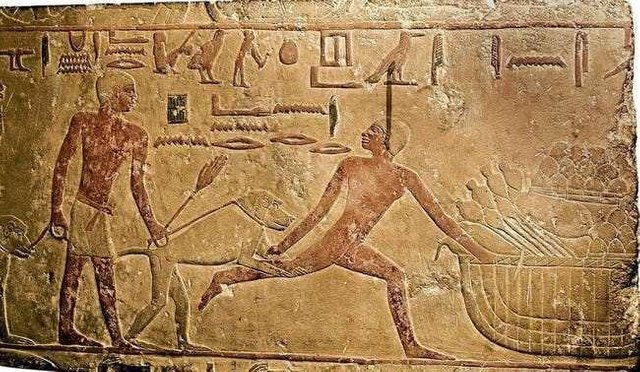
As you know, monkeys today do not live in the wilds of Egypt. But during the Old Kingdom in southern Egypt Hulu lived two species of monkeys - hamadry (P. hamadryas) and olive baboons (P. anubis). However, already in the Middle Kingdom, these animals are no longer representatives of the Egyptian fauna customs. And already as long as New Kingdom monkeys are imported from the south - either from Nubia or from the land of Punta (the southern part of modern Sudan).
During the pre-dynasty period, the ancient Egyptians worshiped a god named Baba (Pig). The name of this god can be translated as "Baboon's father", and he is described as a monkey. (It is likely that the modern subspecies of monkey - baboons, named after the ancient Egyptian god). Baboon is an aggressive animal, and therefore Pig is considered a bloodthirsty god who devours the souls of sinners. Babun is also known for his high sexual potential, so Pig is often depicted with erection, and the ancient Egyptians prayed to him that the deceased should not suffer impotence in the afterlife.
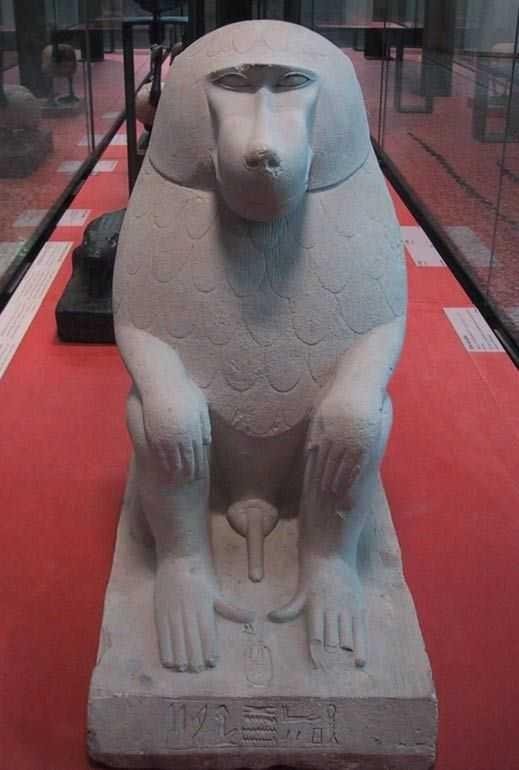
However, in the days of the Old Kingdom, the gods were combined with Thoth, the god of ancient Egyptian wisdom. Perhaps the connection between monkeys and gods of wisdom is done in connection with the fact that baboons are considered intelligent animals.
Because he is regarded as the patron saint of the scribes (scribes, though also unusual names - well, those who write), monkeys are often depicted along with the people of this profession. He is also considered a moon god, so monkeys are sometimes depicted with a crescent moon over their heads. This, in turn, could lead to the unification of baboons with other moon gods - Khonsu. The image confirms this symbiosis can be found in the Khonsu Shrine (Thebes), where in front of the temple complex are God's statues in the form of monkeys.
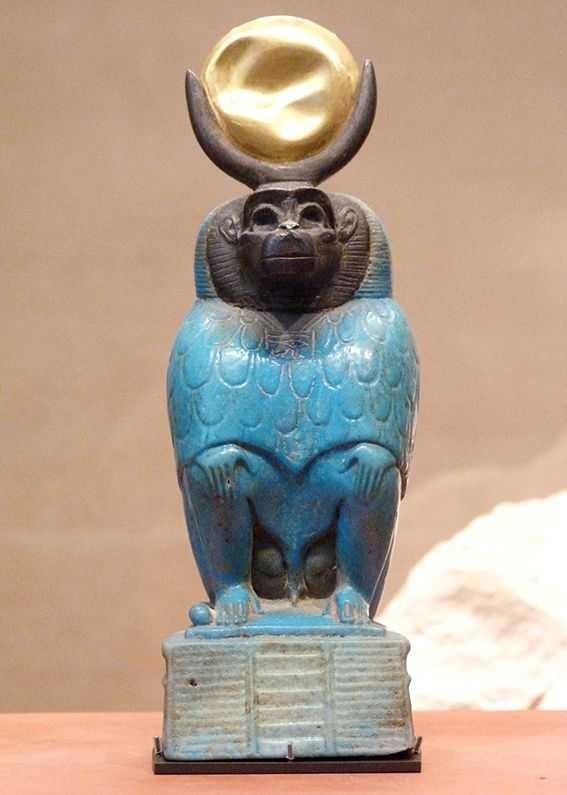
Another god associated with baboons is the Sun God Ra. The ancient Egyptians realized that baboon skin at dawn, and this change is common to the instinct of wild animals, into the image of a monkey by being raised in the act of worshiping the sun by hand. Finally, it is believed that one of the four sons of Horus (God of Falcon), Hapi, has a baboon head. This god is in charge of protecting people who easily die.
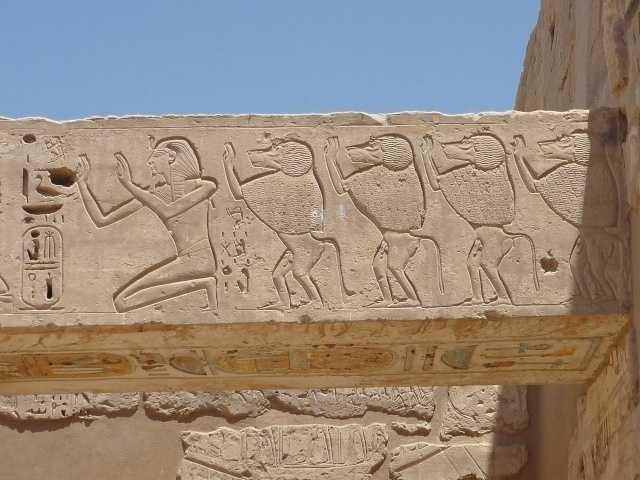
The special role of monkeys in Egyptian society
In Ancient Egypt, monkeys, like sacred animals, were kept in temples, and took care of them held by priests. Monkeys are also often kept as pets in the dwellings of the nobles, those who can afford them.
But there is evidence that such pets are not always treated well. In Hierakonpolis (the archaeologist of Sakkara's modern area) has found a grave with the remains of various animals, including monkeys, once housed in the dwellings of the ancient Egyptians. The analysis of the baboon framework shows that they were repeatedly beaten for life. This cemetery is about 5000 years old, and it belongs late to the dynastic period - the beginning of the First Dynasty of Pharaoh (about 3000 BC). It is suggested that at this point the ancient Egyptians only began to accustom the wild monkeys as pets, hence beatings. But over time, as the Egyptians became more experienced "trainers," they began beating animals less frequently, confirmed by the remains of monkeys found in the cemetery in the next period.
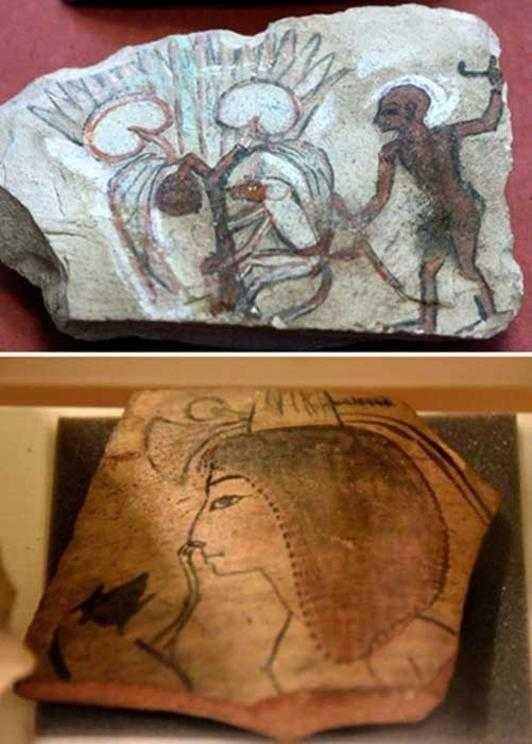
In many works of ancient Egyptian art, monkeys are described as active participants in human life. Some are shown as fruit pickers from tall trees, as is known, in some Asian countries monkeys are also trained today to harvest the fruit. In the tomb of the 12th dynasty, a fragment of the frescoes shows how baboons picked fruit compete with people.
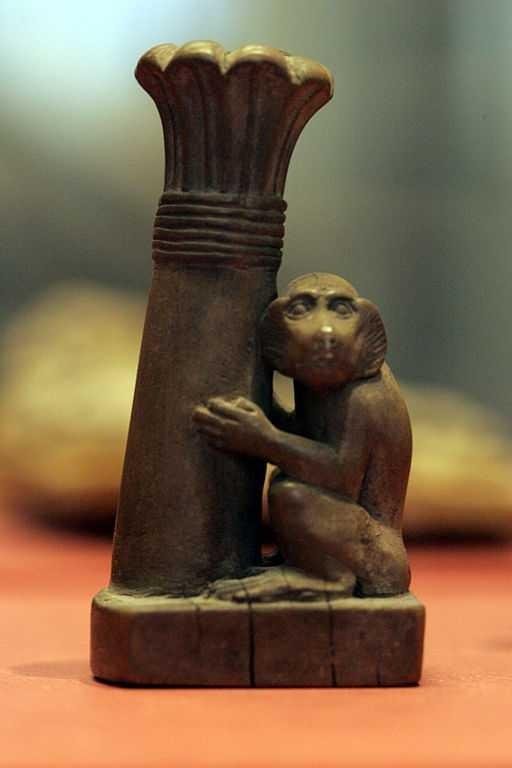
Another type of activity of a pet baboon is helping in the production of alcohol and even what seems generally fantastic, monkeys are used as a kind of "junga" - baboons are used to build and lift screens.
New archaeological discoveries confirm the specific role of baboons in ancient Egyptian religion
In 2017, Japanese and Egyptian archaeologists discovered at Thebes (Luxor) a 3000-year-old royal tomb. The tomb belonged to a man named Honsu, who was described as "the famous scribe", and on his wall depicted monkey worshiping the sun god Ra.
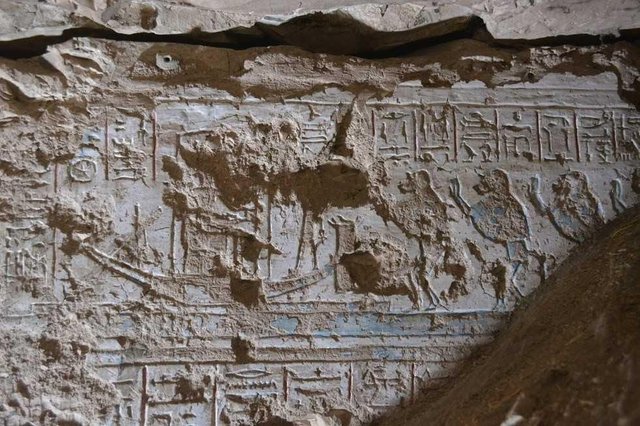
A group of archaeologists led by Jiro Kondo from Waseda University (Japan) discovered a 3,000-year-old tomb that is considered a royal Egyptian scribe in a large cemetery around the Egyptian capital tree - Thebes (Luxor). According to a statement published by the ancient Egyptian Department, the tomb refers to the Pharaonic period, which ruled ancient Egypt in the 19th and 20th dynasties (1292 -1069 BC). This is the later period of the New Kingdom, also known as the Egyptian kingdom, the famous era of ancient Egyptian history between the 16th and the 11th century BC, which includes the eighteenth, nineteen and twentieth dynasties of the Egyptian pharaohs. It was during the New Kingdom in Egypt that attempts were made to create a single kingdom between the Levant and Egypt, and the widest territorial achieved.
According to the official website of Waseda University, the team of archaeologists has cleared from the ancient trash part of the Aserkhat tomb around the El-Khoch necropolis. Aserhat, called "the keeper of the king's private residence," was an official in the ministry of Amenhotep III, the grandfather of King Tutankhamun. On the walls of the cemetery were found inscriptions with images of gods, people and baboons.
More information about the research of archaeologists from Japanese universities can be found here: https://www.waseda.jp/top/en-news/48345
This discovery proves once again that the monkeys were not only animals worshiped by the ancient Egyptians but also predestined creatures who were given certain roles in ancient Egyptian mythology.
PS Despite the fact that in the modern world no one worships monkeys, but sometimes these intelligent creatures prove that they are much smarter than what happened (according to Darwin's theory)
The original article was written by the author about the personal experience of many years working as a tour guide in Egypt.
 )
)
Great Post!! But do you know about "Hanuman" he is worshipped in India and some parts of south-east Asia.
He was as also known as the Monkey God.
https://en.wikipedia.org/wiki/Hanuman
Postingan yang sangat berkelas sukses selalu @badriadi83
@badriadi postingan anda mendapat 100%upvoted dr saya dan izin saya resteem teman
I love to read the story of the ancient Egyptian world, as if we were living in the ancient world and washed away my soul inside
Want to promote your posts?
Send at least 0.1 STEEM or SBD to @dlivepromoter with the post link as the memo and receive an upvote on that post!Delegate Steem Power to @dlivepromoter for a daily payout!
25 SP, 50 SP, 100 SP, 250 SP, 500 SP, custom amountWe pay 85% of bids back to the delegators each day. The remaining 15% is contributed towards @dlivecommunity to help create a larger community.
Disclaimer:
@dlivepromoter is a part of the community project @dlivecommunity. We aim to help streamers navigate their way through @dlive and the overall Steem ecosystem. We are not affiliated with @dlive.Congratulations! This post has been upvoted from the communal account, @minnowsupport, by badriadi83 from the Minnow Support Project. It's a witness project run by aggroed, ausbitbank, teamsteem, theprophet0, someguy123, neoxian, followbtcnews, and netuoso. The goal is to help Steemit grow by supporting Minnows. Please find us at the Peace, Abundance, and Liberty Network (PALnet) Discord Channel. It's a completely public and open space to all members of the Steemit community who voluntarily choose to be there.
If you would like to delegate to the Minnow Support Project you can do so by clicking on the following links: 50SP, 100SP, 250SP, 500SP, 1000SP, 5000SP.
Be sure to leave at least 50SP undelegated on your account.